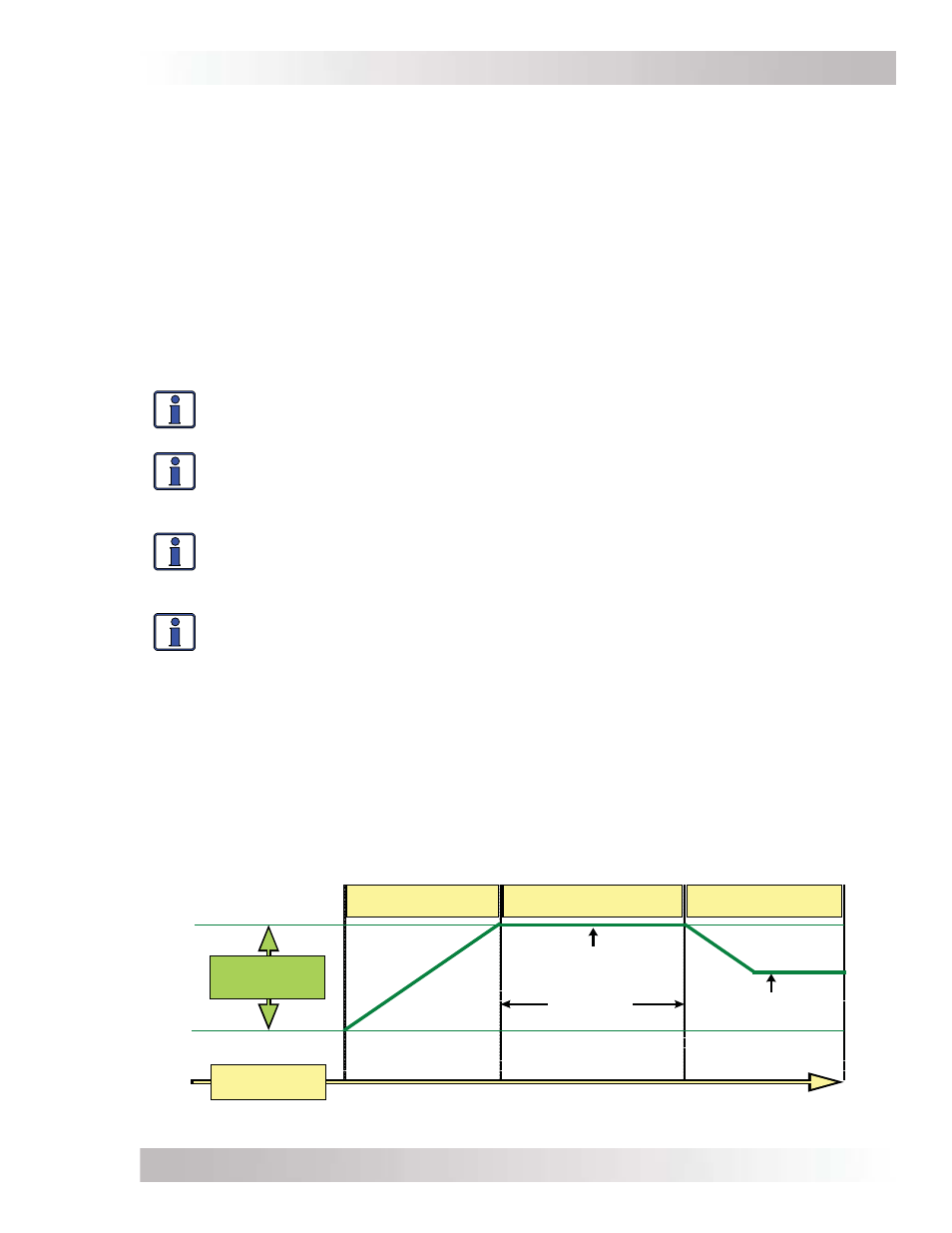Magnum Energy AC Load Diversion Controller (ACLD-40) User Manual
Page 32

Page 25
©
2015 Sensata Technologies
Operation
3.2 Three-Stage
Regulation
The ACLD uses a three-stage process to help monitor the battery voltage (during Standby mode)
and divert current (during Active mode) to help keep the batteries healthy. The three stages: Bulk,
Absorb, and Float (see Figure 3-1) provides complete and automatic recharging and monitoring
of the batteries without damage due to overcharging. When active, the ACLD uses the following
three-stage process to determine when to divert the excess current to regulate the battery voltage:
Bulk Stage: This is the initial stage. While in the Bulk stage, the ACLD allows as much current as
available to charge the battery. The ACLD remains in this stage until the absorb voltage is achieved.
The absorb voltage is determined by the Battery Type settings* in the MS-PAE Series inverter.
Absorb Stage: This is the second stage and begins after the absorb voltage has been reached. The
Absorb stage provides the batteries with a constant voltage and will divert current to the diversion
load in order to maintain the Absorb Voltage setting*. The ACLD stays in the Absorb stage until
the batteries have been maintained at the absorb voltage level for the entire absorption period
(as determined by the Absorption Time setting*), then switches to the Float stage.
Info: The remote control provides several ways to determine the inverter’s absorption
period (i.e., time, amps, or SOC). Even if a selection other than time is selected for
the inverter, the ACLD will only use the last Absorption “Time” setting in the remote.
Info: Contact your battery manufacturer to ensure the best charge settings are used
for your type of batteries. If the Absorb stage is short or terminated, the batteries may
not receive a full charge. In contrast, if the Absorb stage is too long the batteries may
be overcharged. Either scenario may damage the batteries.
Info: The battery bank size will typically determine the length of the absorption period.
The larger the battery bank, the longer the absorption period is needed to ensure a full
charge. The owner’s manual for the remote display provides guidance on determining
the Absorption Time setting based on the amp-hr capacity of your battery bank.
Info: If an equalize charge is required, this must be performed while utility power is
available and connected to the MS-PAE Series inverter. The ACLD does not allow an
equalize charge to be enabled when it is active.
Float Stage: The third stage occurs at the end of the absorb charging time. While in the Float
stage, the charge voltage is reduced to the Float Voltage setting (determined by the Battery Type
selection*). In this stage, the batteries are kept fully charged and ready if needed by the inverter.
The Float stage reduces battery gassing, minimizes watering requirements (for fl ooded batteries),
and ensures the batteries are maintained at optimum capacity.
* These settings are in the MS-PAE Series inverter and communicated to the ACLD. They have a
factory default value, but are changeable. The default values are listed in the owner’s manual for
your MS-PAE Series inverter and are adequate for most installations. However, if you determine
that some of the default values are not appropriate for your particular system, a remote control
can be used to change these settings in the MS-PAE Series inverter.
Reduced
Voltage
Absorb volts
Increased
Voltage
Constant
Voltage
Bulk Stage
Absorb Stage
Float Stage
Absorb
Time
Float volts
DC
Voltage
Time
Figure 3-1, Automatic 3-Stage Graph
